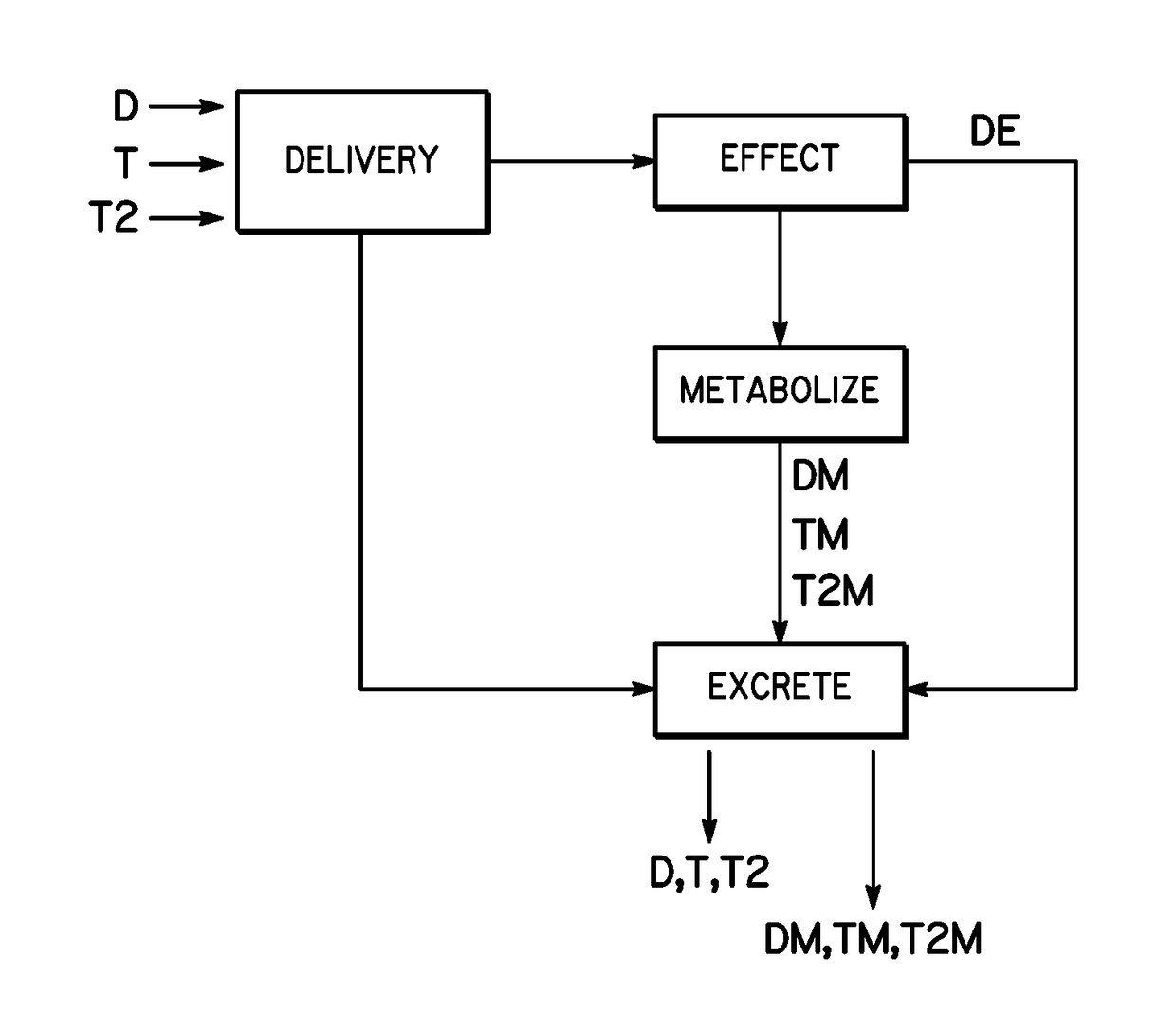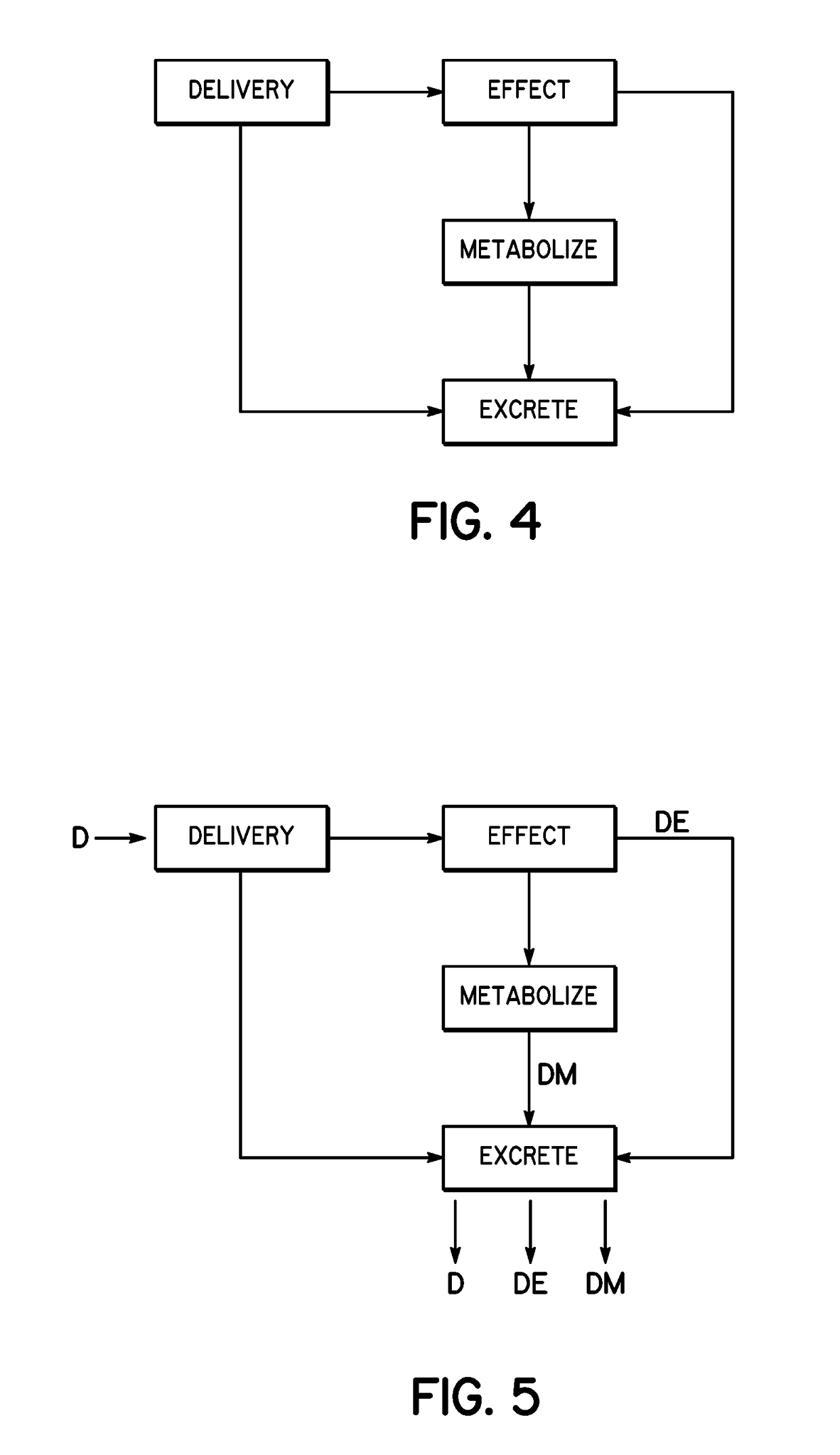Sweat monitoring and control of drug delivery
- Summary
- Abstract
- Description
- Claims
- Application Information
AI Technical Summary
Benefits of technology
Problems solved by technology
Method used
Image
Examples
Embodiment Construction
[0025]The ability to detect the concentration of a drug in sweat over time requires the use of a chronologically assured sweat sampling rate. To understand the proper numerical values or representations of sweat sampling rate, sweat generation rate and sweat volumes should be understood. Based on the assumption of a sweat gland density of 100 / cm2, a sensor that is 0.55 cm in radius (1.1 cm in diameter) would cover about 1 cm2 area or approximately 100 sweat glands. Next, assume a sweat volume under a skin-facing sensor (space between the sensor and the skin) of 50 μm average height or 50×10−4 cm, and that same 1 cm2 area, which provides a sweat volume of 50×10−4 cm3 or about 50×10−4 mL or 5 μL of volume. With the maximum sweat generation rate of 5 nL / min / gland and 100 glands, it would require a 10 minutes to fully refresh the sweat volume (using 1st principles / simplest calculation only). With the minimum sweat generation rate of 0.1 nL / min / gland and 100 glands, it would require 500 ...
PUM
 Login to View More
Login to View More Abstract
Description
Claims
Application Information
 Login to View More
Login to View More - R&D
- Intellectual Property
- Life Sciences
- Materials
- Tech Scout
- Unparalleled Data Quality
- Higher Quality Content
- 60% Fewer Hallucinations
Browse by: Latest US Patents, China's latest patents, Technical Efficacy Thesaurus, Application Domain, Technology Topic, Popular Technical Reports.
© 2025 PatSnap. All rights reserved.Legal|Privacy policy|Modern Slavery Act Transparency Statement|Sitemap|About US| Contact US: help@patsnap.com



